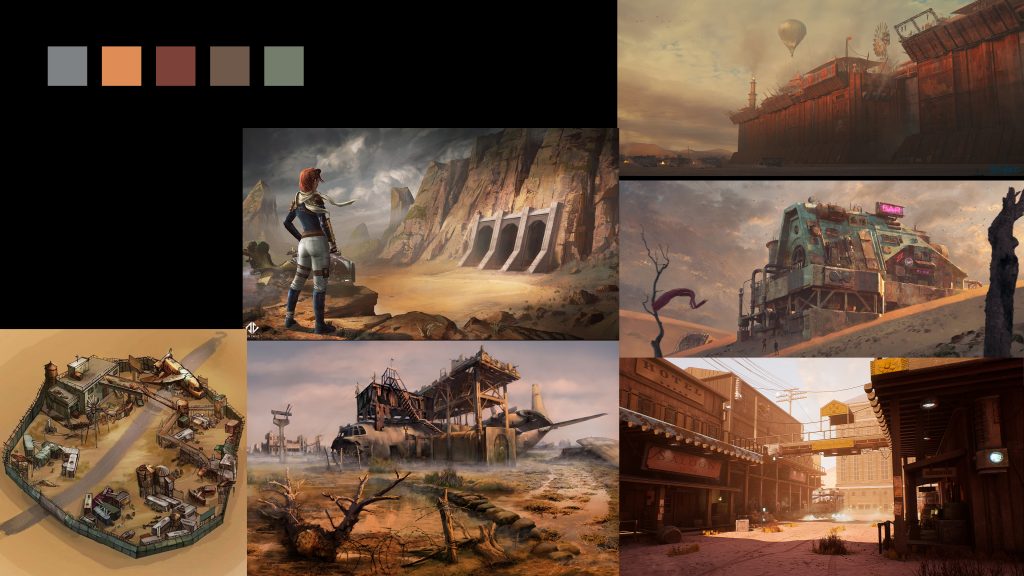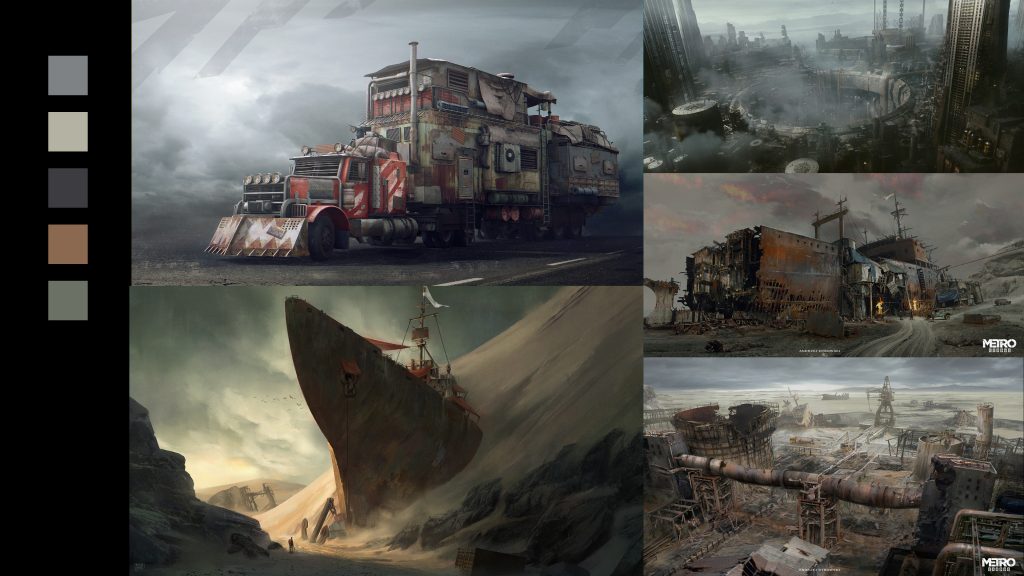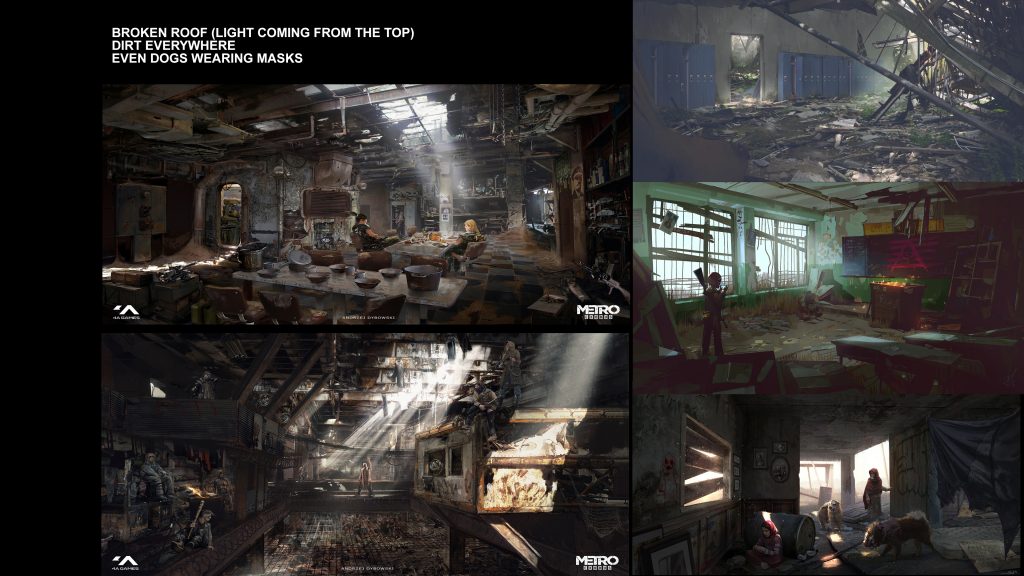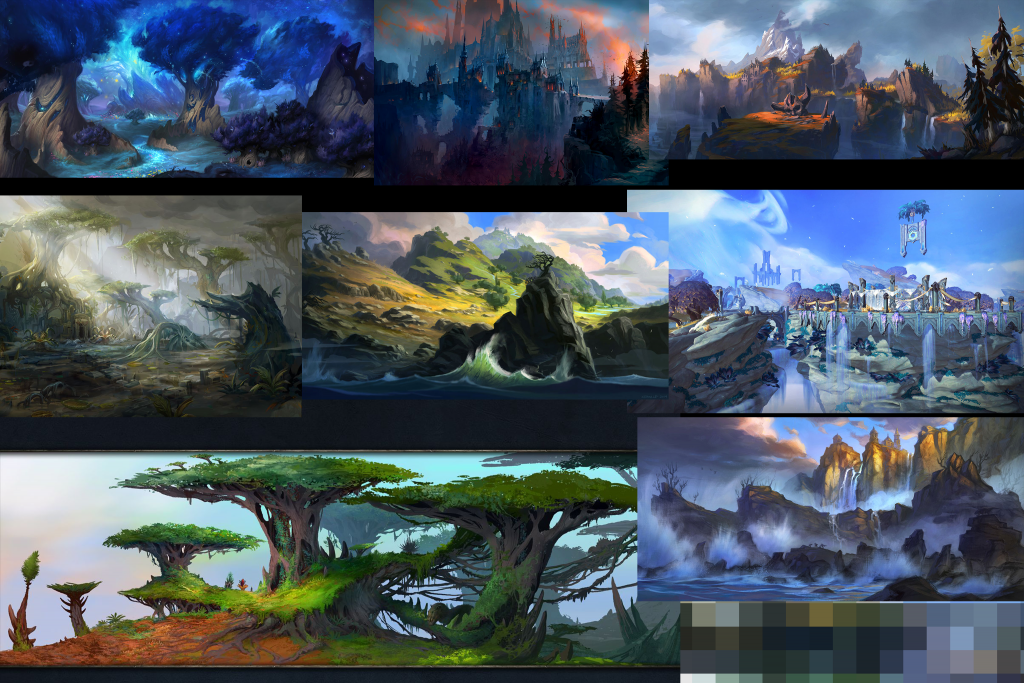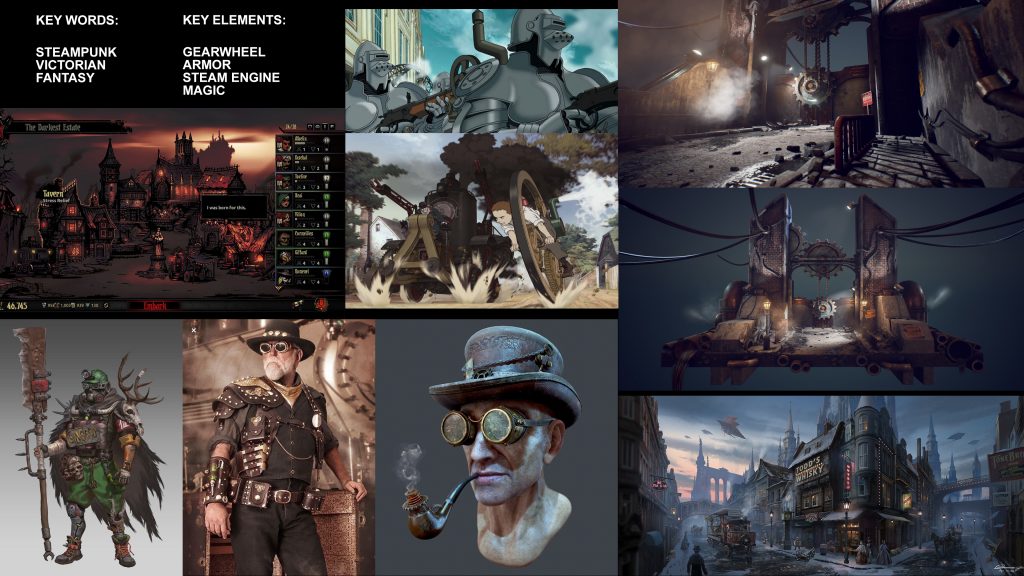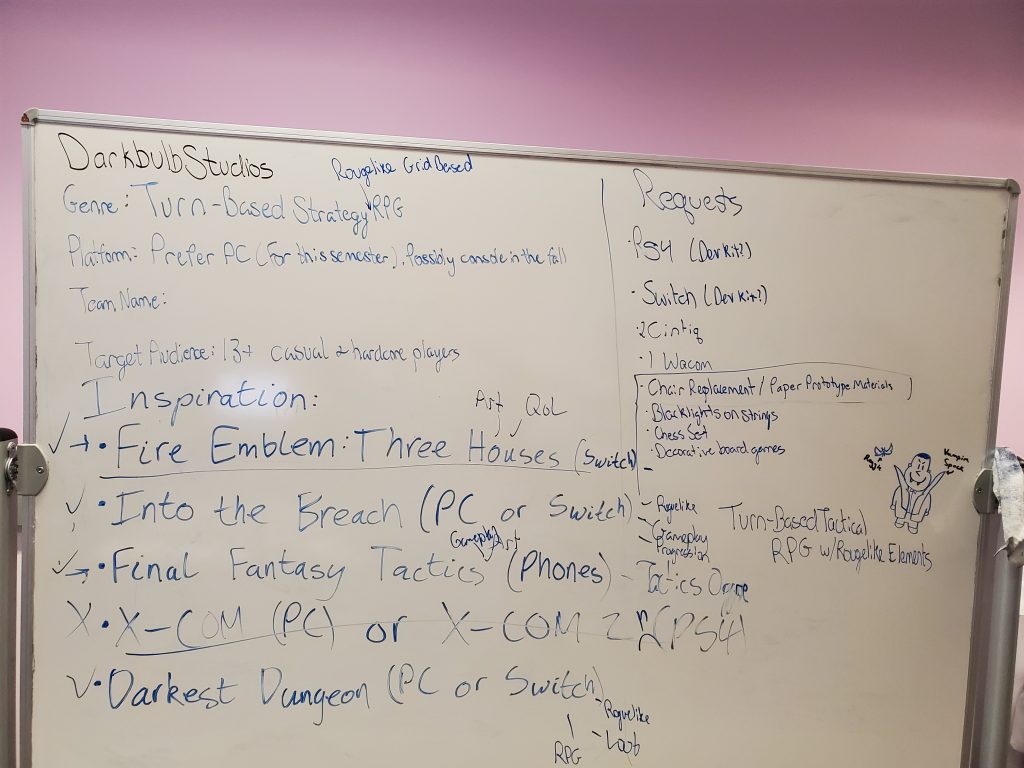Week 2 was a very powerful learning experience for the team. We had our weekly meeting with our faculty advisers, showing them our progress on our brainstorming. We showed them mood boards of fantasy concept art from games like World of Warcraft, a somewhat detailed high-level idea of a setting of a Victorian/Steampunk world, and an analysis of our four game inspirations. The only piece that we showed that was positively received was our game analyses. They looked at our setting and mechanics, and simply asked, “Why did you choose these options? What got you to this point?”
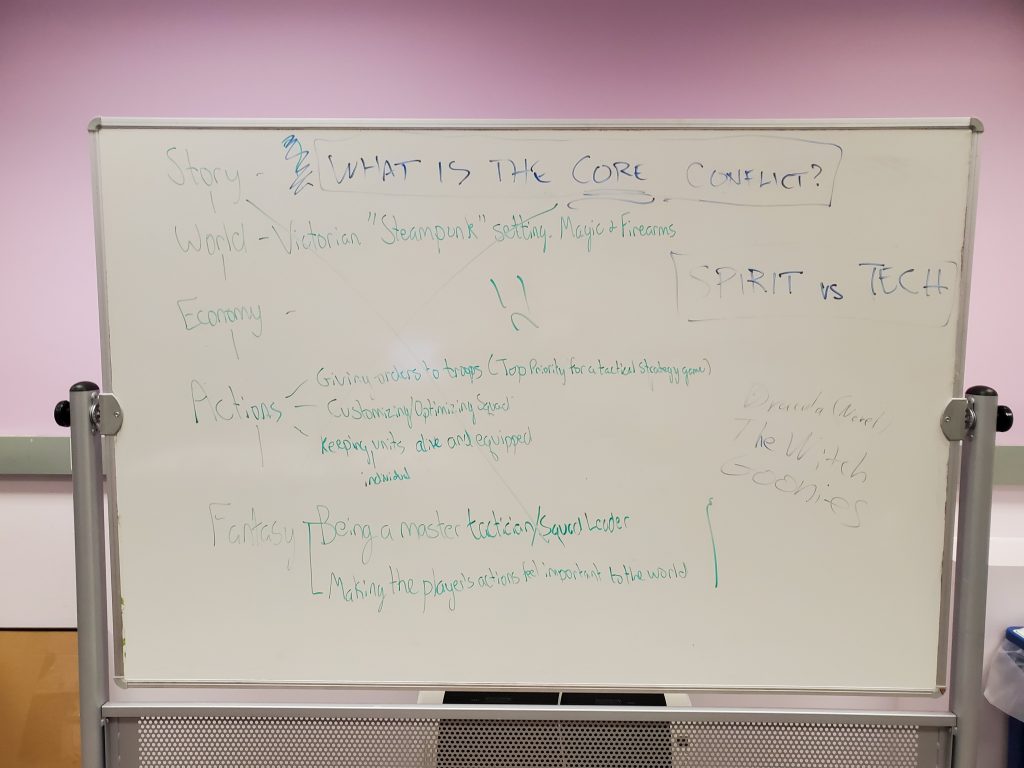
Other than answering that we liked the steampunk aesthetic, we could not really go into detail. They then told us that we are trying to rush to begin. They said before answering any story details, we need to figure out what our Core Conflict is in our game. For example, one could argue that Star Wars’ Core Conflict could be Spirit (Jedi Monks) vs Tech (Sith). Instead of just arbitrarily choosing random settings and story points, we need to decide on what kind of story we want to tell with our game. They said that we first should look to whatever demographic we choose to tackle to see what conflict appeal to them. As stated in Week 1, we tentatively chose a young adult casual audience to try to see if we could develop a tactical RPG that would appeal to them. Our advisers advised against this as they felt like casual gamers and tactical RPGs are inherently at odds with one another, and we would make our lives difficult for no reason.
They also took slight issue to one of our mood board compositions. It consisted entirely of images of World of Warcraft concept art (seen above in the bottom left). While these images are beautiful and could easily be made into a style we may be interested in, our advisers heeded against using game concept art as inspiration. They gave us Riot Games as an example of how to properly start the art pre-production phase. They created a champion in League of Legends named Gangplank. In order to create his design, the entire art team spent months researching pirates in every corner of the world. They pulled art from various cultures, noting how they may visually change according to their location in the world. They then created their hero by mixing all of the various pirate cultures together in order to create a pirate that had some visual recognition to almost all players in the world. Their anecdote was meant to teach us that looking at game art is basically already looking at a filter of the real thing. We should look at real world art, photos, paintings, and movies to draw inspiration from. If we only look to other game worlds for inspiration, we may end up copying their style instead of creating our own.
After receiving all of this feedback, we then decided to meet together to discuss Core Conflict and a change in target demographic. We quickly pivoted to a hardcore young adult audience as they are the most inclined to enjoy tactical RPGs. When discussing the Core Conflict, we found that we had no idea where to begin. If we just began to list common Core Conflicts in media, how could we possibly arbitrarily choose one? If there is even two pitches for a Core Conflict, someone or a group of people would end up frustrated because their idea would not get picked for no real reason. Without grounding our idea in anything, choosing a Core Conflict would make someone end up feeling like their opinions are not valued. However, there is the same issue in trying to ground the setting without a Core Conflict. Without anyone explicitly being in charge of these decisions, there is no way to fairly choose without someone’s opinion losing out. After a few days of discussing how to go about this issue, we all figured out why our faculty warned us about total creative freedom. We then all decided to allow our advisers to act as clients to pitch us a concept for us to work on. We were given what you see below:
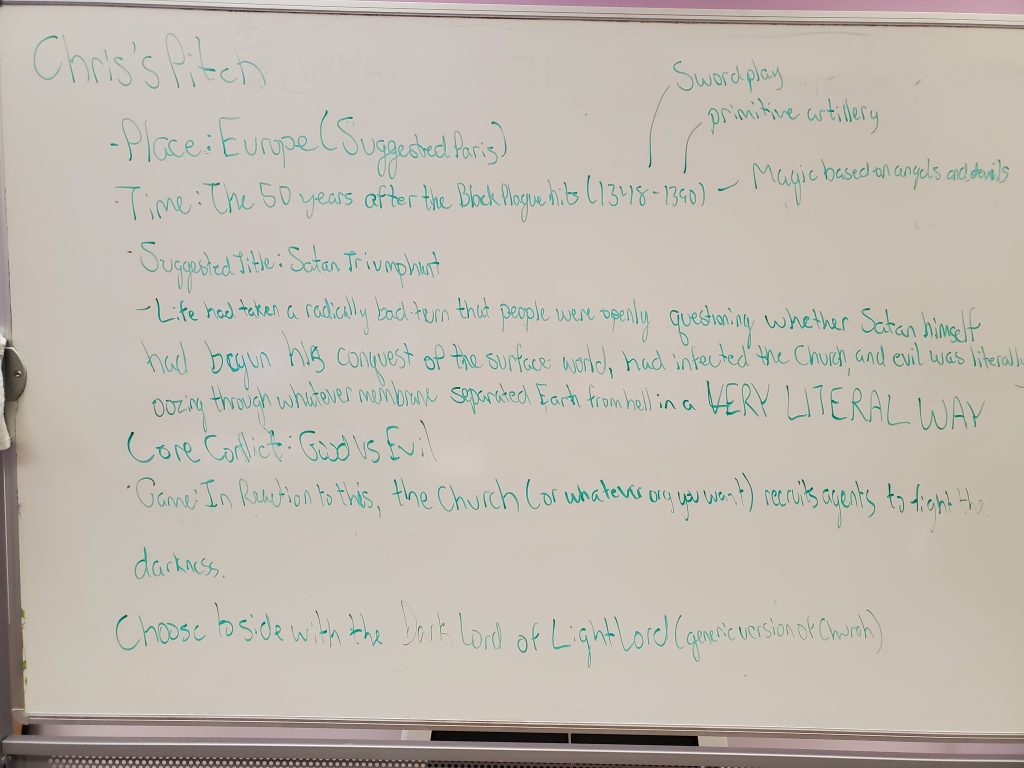
We were given a time, Core Conflict, setting, and a possible story idea. This gave us the grounding we need to be able to hit the ground running. We had our artists begin researching paintings of soldiers and commoners, and studying the architecture of France in the fourteenth century. We had our designers begin to research the weapons of the time, and research games that have used this setting to get inspirations for mechanics or area design. We then had our last two members begin to research people, places, and events of the time. This includes the 100 Year War between England and France, and the Black Plague that swept the world at that time. We also started to research music during the time period, all to begin to find inspiration for what we wanted our game to be. Our major takeaway from this week was our realization of the horrors of having no constraints in a creative space. In an ideation period where there is nothing to base ideas off of, how do you possibly judge ideas in an unbiased manner? With a development cycle as short as fourteen weeks, we did not have the time to spend arbitrarily debating ideas that we cannot prove to be the correct approach or not. We needed a base to start off of, and we are now have a direction to head towards for next week.

